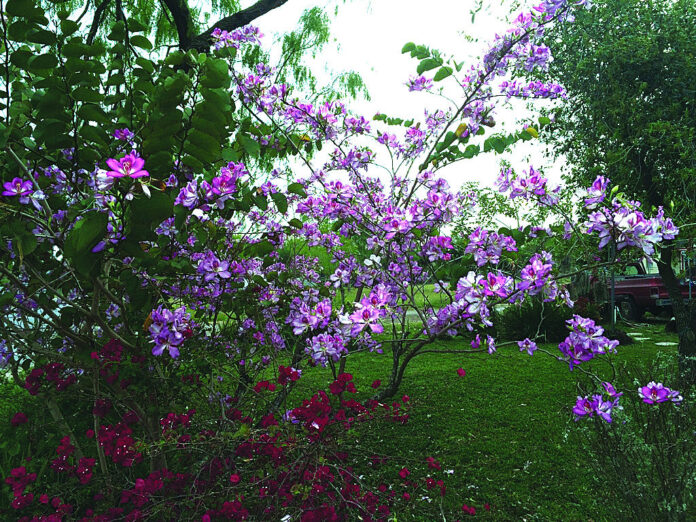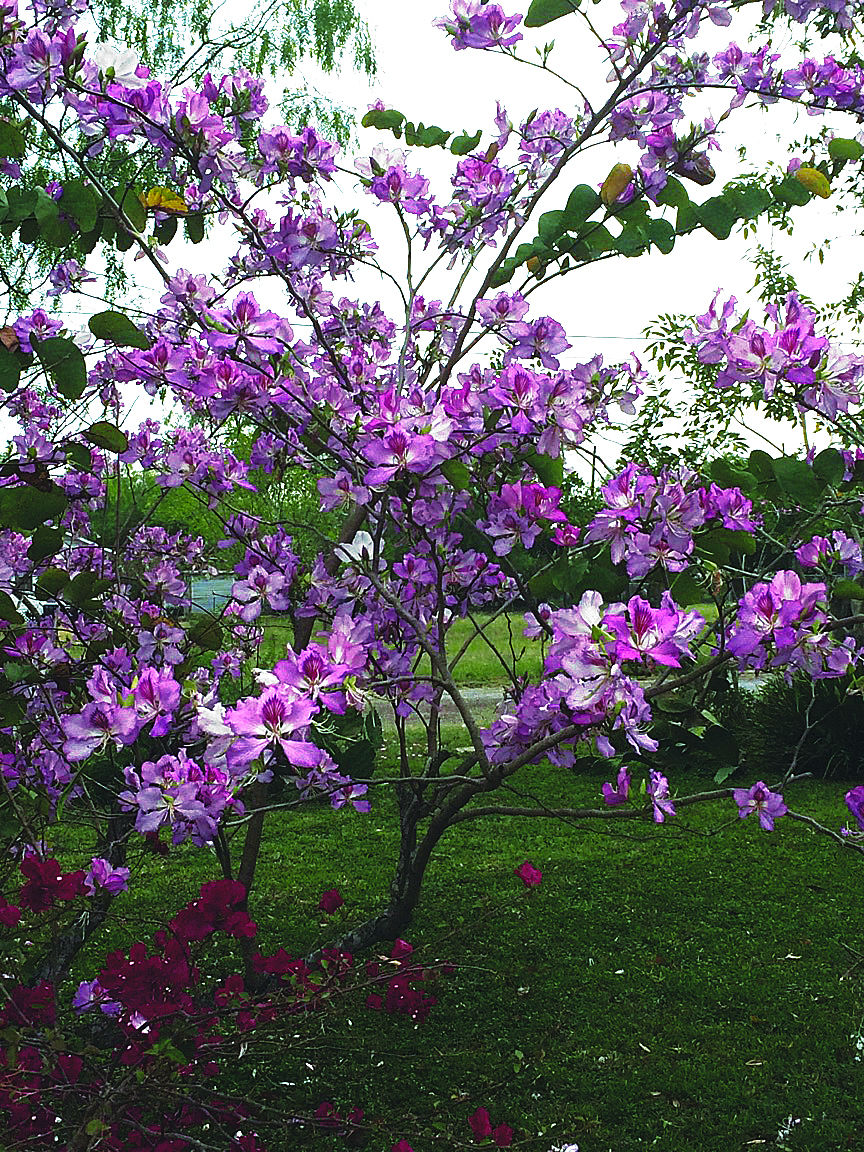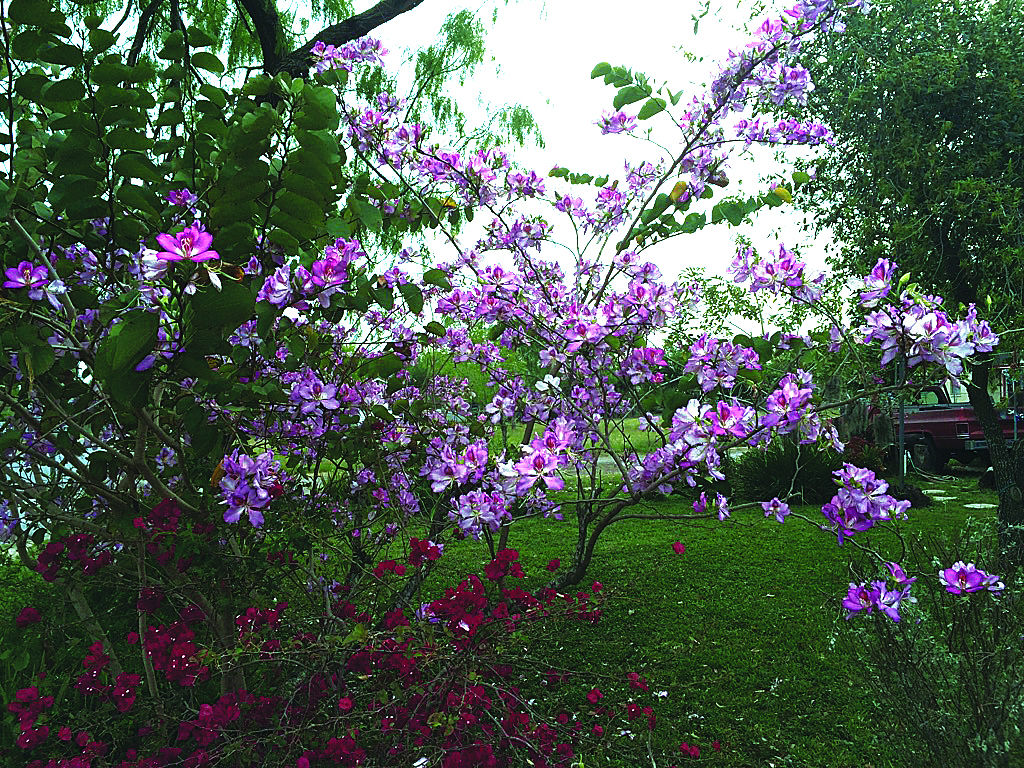BY LORI MURRAY
One of the most stunning ornamental trees in the Valley is the spring blooming Orchid Tree, the Purple Bauhinia purpurea commonly known as Pata De Vaca from the shape of its leaves. In March it can be found everywhere — on city streets and in front and back yards — and in all sizes and shapes, always laden with flowers.
This stunning tree is deciduous, multi-trunked, and semi-evergreen so it even looks good in winter. It will grow in part or full sun though it seems to me that more sun equals more blooms.
It can grow 15 – 30 feet tall with a canopy width of 10 – 15 feet, and tolerates our heat extremely well. As an added bonus, it also attracts hummingbirds and butterflies.
There is also a less common white flowered version called Bauhinia variegata. Both of these species are incredibly saturated in flowers when they bloom.
The only real danger to this tropical plant is cold weather as it is only reliable outdoors in our zone and further south, but if a freeze comes, the orchid tree will still come back from its perennial roots and soon regain its original size.
One of the things which amazes me about this beautiful tree is its ease of propagation. Our very first trees were the result of a walk around city lake and a few gathered seeds.
From those few seeds we have grown many orchid trees for ourselves and others. Also, the trees currently blooming in our yard helpfully drop their seed pods or the seed pods burst, and the seeds in turn root easily and provide more small trees.
There is no need to scarify the seeds; in fact, many of them root and grow right where they fall so it is not unusual to find an orchid tree or two in a nearby bed in the spring.
The species is a Southeast Asia native so extensively naturalized in subtropical and tropical climates that it has become invasive in some regions.
The orchid tree is also ideal for impatient gardeners because it is a fast grower and blooms right away.
In an article titled “Plants of Ornamental Value for the Rio Grande Valley of Texas,“ W.H. Friend, a former superintendant in Weslaco, laments that “Many thousands of dollars have been wasted in the Lower Rio Grande Valley in an effort to establish plants in this environment that are not adaptable to prevailing conditions.
Many plants which are not adapted to our soil and climate should give way to more suitable material.
For example…we should learn to avoid the pest-ridden Hackberry when it is just as easy to grow the beautiful Silk Oak or the Brazilian Pepper tree…Why grow Chinaberry trees, Spiraea and Honeysuckle in a land that will produce the lordly palm, beautiful Orchid Tree or the showy Flame Vine?” There is a lesson in that for all of us (and a reason to learn as much as possible about the kinds of plants that flourish right here at home.)
http://aggiehorticulture.tamu.edu






